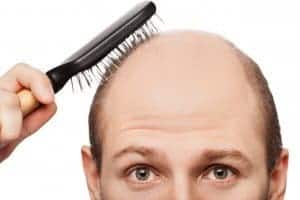Every week, 2 or 3 individuals come to my office with either Traction Alopecia and/or Trichotillomania. If you’re reading this you may have it and know what it is. For those who don’t here is the wiki definition of them:
Trichotillomania (pronounced TRIK-?-TIL-?-MAY-NEE-?, also known as trichotillosis or hair pulling disorder) is the compulsive urge to pull out (and in some cases, eat) one’s own hair leading to noticeable hair loss, distress, and social or functional impairment. It appears in the DSM-V chapter on obsessive-compulsive and related disorders and is often chronic and difficult to treat.[1]
Trichotillomania may be present in infants, but the peak age of onset is 9 to 13. It may be triggered by depression or stress. Owing to social implications the disorder is often unreported and it is difficult to accurately predict its prevalence; the lifetime prevalence is estimated to be between 0.6% (overall) and may be as high as 1.5% (in males) to 3.4% (in females). Common areas for hair to be pulled out are the scalp, eyelashes, eyebrows, legs, arms, hands, nose and the pubic areas.
The name, coined by French dermatologist François Henri Hallopeau, derives from the Greek: trich- (hair), till(en) (to pull), and mania (“madness, frenzy”).[2]
Source: http://en.wikipedia.org/wiki/Trichotillomania
Traction Alopecia is a form of alopecia, or gradual hair loss, caused primarily by pulling force being applied to the hair. This commonly results from the sufferer frequently wearing their hair in a particularly tight ponytail, pigtails, or braids. It is also seen occasionally in long-haired people who use barrettes to keep hair out of their faces. Traction alopecia is recession of the hairline due to chronic traction, or hair pulling, and is characterized by a fringe along the marginal hairline on physical exam.[3][4]
Source: http://en.wikipedia.org/wiki/Traction_alopecia
Treating Trichotillomania: This is not something you are taught to deal with. In fact this is more a compulsive issue that should be dealt with, with your family physician prior to coming to a hair loss clinic.
In order to have a hair transplant into said areas – the risk is that if the disorder has not been effectively treated, there is a high likelihood that the transplanted hair will once again be pulled out which would not make sense for us to do. We would want to see at least two to three years of none pulling, verified by a GP or counsellor, in order to consider going a hair transplant.
The BEST solution we have found is to have a hair system, even if you have a full head of hair. Believe it or not, this seems to be a great option, as the hair system covers your own hair and protects it from pulling. If you are going to pull hair, you will be pulling out the hair from the system and not your own. This allows you to not damage your hair while you are treating it.
Traction Alopecia: This is most commonly found in Sikh and African American backgrounds and less commonly in Caucasians. Typically, the best advice is to stop pulling the hair tight or to cut the hair short below the turban for a period of 1 year and try therapies such as laser light therapy and minoxidil to see if this will stimulate any growth. If after a period of 1 year the results are poor it then would make sense to do a hair transplant into those thinning or barren areas.
The saddest part about this type of hair loss is that it is self induced and spreading the word and understanding these types of hair loss as completely stoppable by one’s own self, is ideal. It is sad thing having to spend thousands of dollars on something you could have prevented.
Please take a look at our videos showing the caliber of work we do for hair transplants:
I encourage you to look thoroughly through our results and compare them to any other clinic – I have taken many videos of our patients and they are the most comprehensive I can find on the web – videos show the amazing quality of work we do and I would ask you one question – is it worth it to cheap out on a transplant and not get an amazing results or to spend more to get the best result possible in the world?













